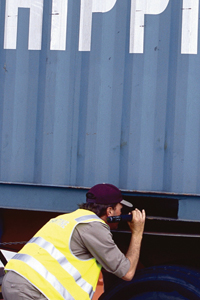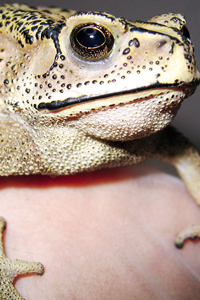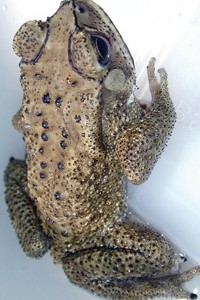Black spined toad fact sheet
If you have difficulty accessing this file, contact us for help.
The black spined toad is found in China, southern Asia, India, Pakistan, Nepal and Indonesia. It is related to the cane toad which, in Australia, has no natural predators.



Note: images are not to size
The risk to Australia
The black spined toad is potentially more damaging than the cane toad and could become established in the cooler parts of Australia. Being a carnivore, the black spined toad could cause significant damage to Australia’s natural environment. It competes with native frogs and toads for food and habitats, and is likely to carry exotic parasites or disease.
What the black spined toad looks like
An adult black spined toad looks very similar to the cane toad but does not grow as big. It has short brown to black spines on its upper body and sides. The warts on its back are stained black by the toxins it produces to ward off predators. Underneath the warts, the colour of the toad can vary from olive, orange-brown or dark red. It has black-tipped, hooked toes on its front limbs and a black rim extending from its top lip to above its eye. The belly is pale to light brown with brown spots appearing towards the throat.
What to look for and where
The black spined toad is commonly found on international vessels, shipping containers, machinery and personal effects such as bags, boxes and cartons. It likes to shelter in dark, moist areas such as shoes. It is often seen at night under street lamps, especially during summer when winged insects swarm.
SEE. SECURE. REPORT.
If you see this pest or any other pest that you think may have hitchhiked to Australia, contain it where possible and immediately report it to the Department of Agriculture, Fisheries and Forestry on 1800 798 636.
For safety consult a Department of Agriculture, Fisheries and Forestry entomologist before handling specimens.
